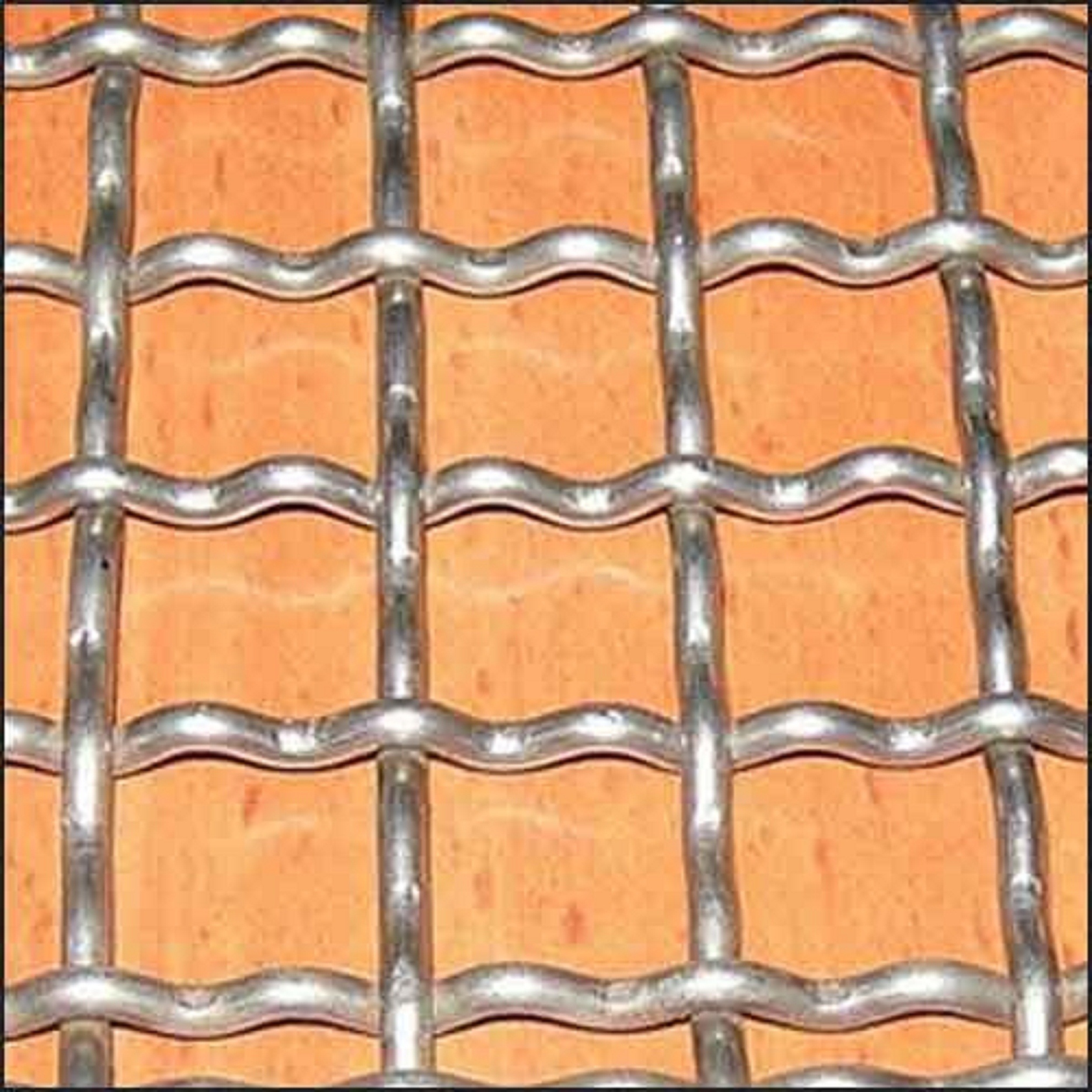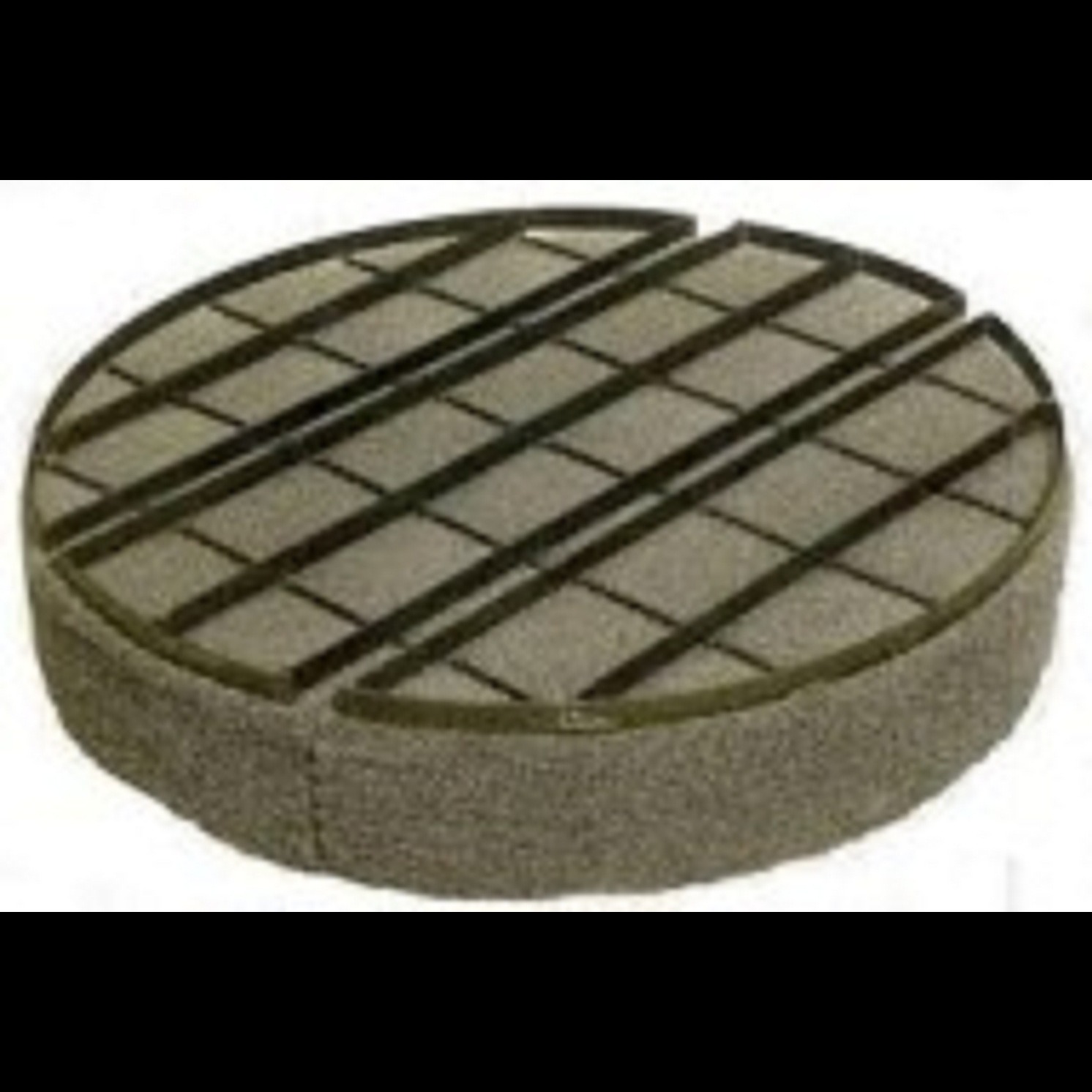
Benefits of Using Crimped Wire Mesh in Flooring
1. High Load-Bearing Capacity
o The crimped structure gives the mesh enhanced rigidity and strength.
o Suitable for walkways, platforms, catwalks, and heavy-duty industrial floors.
2. Slip Resistance
o The textured surface offers better grip than flat metal sheets, reducing the risk of slipping.
3. Good Drainage and Ventilation
o Allows water, dust, or small debris to fall through—ideal for outdoor use or processing plants.
4. Durability
o Often made from stainless steel, galvanized steel, or carbon steel, which are corrosion-resistant and long-lasting.
5. Cost-Effective and Lightweight
o Lighter than solid flooring panels and easier to handle during installation.
6. Aesthetic Appeal (in architectural use)
o Can be used in modern architecture as decorative flooring or ceiling panels.
Crimped wire mesh can be used in reinforcement, but it's not typically used as a primary reinforcement in structural concrete like rebar or welded wire mesh. However, it has specific niche applications in reinforcement contexts. Here's how:
________________________________________
✅ Uses of Crimped Wire Mesh in Reinforcement
1. Plaster and Rendering Reinforcement
• Provides a mechanical key for plaster or stucco to adhere to.
• Helps control cracking and improve the structural integrity of surface coatings.
• Common in walls, ceilings, and curved surfaces.
2. Lightweight Concrete Structures
• Used in precast panels, lightweight partitions, or non-structural concrete forms.
• Helps distribute shrinkage stresses and minor loads.
3. Rock and Tunnel Support (Shotcrete Reinforcement)
• Installed over rock surfaces in mining or tunneling.
• Crimped mesh holds the shape and supports the shotcrete during application.
4. Floor Screed Reinforcement
• In industrial or commercial floors where only light to moderate reinforcement is needed.
• Prevents surface cracking and improves load distribution in top layers of floors.
5. Composite Structures
• Used as part of composite panels where mesh is embedded in sandwich-type materials.
• Enhances shear strength and bonding between layers.
________________________________________
Limitations
• Not suitable for heavy structural loads — it lacks the tensile strength and bonding characteristics of rebar.
• Mesh openings may not meet code requirements for spacing or bar diameter in structural concrete.
• Deformation (crimp) may interfere with concrete cover or cause placement issues.
________________________________________
Summary
Application Suitability of Crimped Wire Mesh
Structural concrete (beams, slabs, columns) * Not recommended
Plaster/render/stucco reinforcement * Very effective
Shot crete support in tunnels/mines * Commonly used
Light-duty floor screeds * Useful
Precast or lightweight panels * Can be effective
Keywords
bonding characteristics
tensile strength
reinforcement 1 plaster
lightweight panels
tunnelsmines commonly
concrete cover
bar diameter
commercial floors
rock surfaces
walls ceilings
mechanical key
modern architecture
longlasting 5 costeffective
carbon steel
fall throughideal
small debris
water dust
moderate reinforcement
rendering reinforcement
primary reinforcement
composite panels
structural integrity
structural concrete
top layers
decorative flooring
crimped structure
layers ________________________________________ limitations
rebar mesh openings
solid flooring panels
recommended plasterrenderstucco reinforcement
reinforcement contexts heres
crimped wire mesh
heavy structural loads
welded wire mesh
mesh enhanced rigidity
lightduty floor screeds
meet code requirements
improves load distribution
surface coatings common
helps control cracking
specific niche applications
textured surface offers
walkways platforms catwalks




